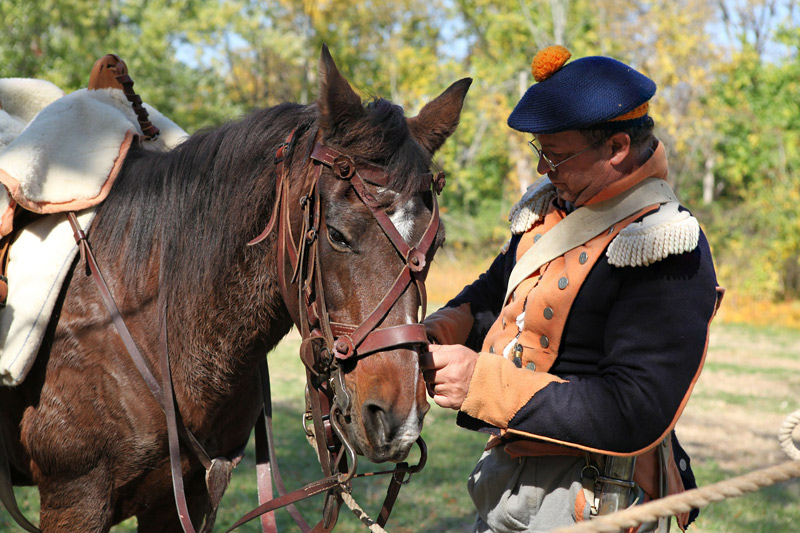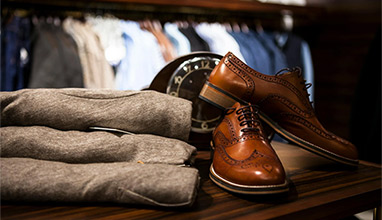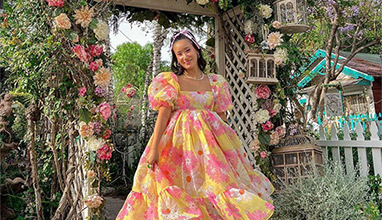7 Beginner Tips To Help You With Historical Reenactments
As a beginner, you must choose a persona, an interesting period in history, do research on every aspect, manage a kit, and join a reputable group or society.
History is always fascinating, and historical reenacting gives you the chance to experience any significant historical events.
Historical reenacting is a fun, exciting, and more authentic way to learn about our past. Just about anyone can play a part in reenactments but must do significant research to portray an accurate image of the past.

What Exactly Is Reenacting?
Reenacting can be both fun and serious event. The people who take part in these reenactments take their roles seriously but enjoy it as well.
Their job is to portray an accurate representation, and they certainly take pride in it. Many professional groups aim for maximum accuracy, but some groups allow beginners to perform.
But, to make the most accurate reenactments, you will need to be committed to the work. You will need to invest time, energy, resources, and even money.
Clothing and props related to reenactments can even cost thousands of dollars. Historical Reenactment Reproduction Clothing can cost a few hundred dollars, and historical reenactment rifles can even cost up to $1,000 or more.
Reenactment means "living history," and to create that ambiance, pro reenactors are even willing to go to extreme levels. Since you want history to come alive, you will have to recreate the same environmental conditions of the past.
This could mean uncomfortable clothes, weather, terrible food, and several other things.
Different reenactments have different time limits. Some are only for a few hours, while others can be three days or weekly events. Whatever the case, there is always something to learn and experience through these historical reenactments.
What Does A Reenactor do?
Reenactors are the ones who portray different characters to recreate history. Their job is to make it look as accurate as possible, including recreating actions, lives, and even people’s appearances from a particular historical era.
The best part is that almost anyone with a knack for history can participate in reenacting. There are practically limitless roles one can play, and even kids can enact roles suitable for children. However, for some events, there are some age requirements. For instance, if there are battlefield scenes, some groups have a minimum age requirement of 12 to 13.
Some reenactments may also require the use of firearms. In that case, most groups have a minimum age requirement of 16. But for most roles, anyone can participate.
Most of the reenactors are aged 16 and above. These are everyday people with regular day jobs. To become a reenactor, you have to be physically and mentally fit, have good knowledge about the history of the event, and be ready to say farewell to modern comforts that are not allowed in reenacting.
7 Tips For Starting Reenacting
Reenacting sounds like taking part in a play, but you have to be a bit more committed to the role. It is indeed fun, but you will have to invest yourself.
The reenacting groups are very welcoming and will gladly show you around the ropes. You can even borrow their kits until you manage your own. All you have to do is take the first step.
If you are willing to start reenacting, then these ten tips will surely help you along the way.
1. Find A Preferable Time Period
Finding a time period that specifically interests or fascinates you is a good way to start. It will make your research more enjoyable and based on the events. You might have to do countless hours of research.
You could also pick a time period regarding your ancestors, any kind of wars, or you can take a chapter from the books of Roman history, Byzantine Empire, Colonial America, or the medieval times.
2. Do Extensive Research On Your Character
You have to choose a suitable character, and the character you will be portraying is called a persona. A persona can even be called an impression. Based on the event you will be performing, your persona can be a fictional or a real individual who was alive at that time.
To find the right persona, you should first identify who you truly are, your traits, or imagine who you like to become. Once you have that image in your mind, find the person who resembles these traits and lived in a particular past period.
One of the most common roles reenactors like to play is of a soldier. But remember, there are still plenty of other important characters in military reenactments.
You can choose to be anyone, like nurses, wives, merchants, or even surgeons. Find a character that has some similarities and personal attachments with you. It will make your experience much better.
Now that you have selected your persona, you have to research everything about them. You have to learn how they dressed, spoke, ate, walked, their beliefs, views, and even social interactions. Basically, you have to become an embodiment of that person.
3. Mainstream Media Can Be Deceptive
Movies, series, and shows should not be your source of information since cinemas are not created for historical accuracy. Instead, they are made for entertainment purposes. They also use visual effects to tweak a lot of things. So, there will be plenty of differences.
To portray the most authentic historical reenactment, you should first take notes from official historical documents, books, and accurate websites. You can talk with professors, take a museum tour, and visit the library to get all your historical facts.
Once you have done all this, you should have a nice information book about your persona, the time period, the environment, and everything related to it.
So do not be confused if your research from books and documents do not match with cinemas. Stick to your former research notes.
4. Patience Pays Off
Like we said earlier, you must do extensive research on your persona and time period, and the amount of information can sometimes be overwhelming.
Do not try to rush in and hastily learn everything. Take time to master everything. You will even save a lot of time, energy, and money if you take your time when going through the basics.
5. Work With Established Reenactment Groups
Try to look for reenactment groups that are close to your home. This will save you a lot of time and money when going to work.
You can find reenactment groups or societies everywhere: the U.K, Sweden, Canada & Germany. You can easily find your local reenactment group through social media, websites, or newspapers and even find probable dates for the upcoming events.
You are likely to find the best and largest reenactment groups from Spring to Fall because the largest events occur outdoors, and most of the famous groups are highly active at that time.
You can attend these events and then decide which group you want to join.
6. Manage Authentic Kits
The equipment and clothes you will be using as the persona is referred to as a kit. Your kit is the thing that makes your persona visually real. Whether you are a soldier, bartender, or a trapped princess, your kit should have all the necessary items to bring back that piece of history to life.
You also have to be decisive in choosing the right kit. If you are portraying a farmer, you will not need a kit with fancy clothes and firearms. Take a second look at your research notes, and then decide what your kit should and should not contain.
Making your kit in the best part of reenacting cause you have so many things to choose from. If you are having a hard time, do not worry because the group you joined is likely to have the necessary props, clothes, and equipment.
Try out your persona, loan out the equipment for the first time, and then create your own kit. However, during this time of Pandemic, fully managing your kit might be a bit difficult.
7. Start With Easier Things
You may at first be overwhelmed with all the information, and that feeling is natural. This is why it is best to start with small characters. For instance, you can opt for playing a farmer, fisherman, or a wagon driver instead of a warrior at war.
You really do not have to collect tons of information other than just learning about their appearance, habits, and speaking manner.
However, suppose you choose to play a wealthy merchant, a bookkeeper, or a politician. In that case, you will have to dig deep inside the pages of history to learn more about the business methods merchants used, bookkeeping techniques used at that time, and political beliefs and conditions of that period.
If you are new to reenactment, it is best to choose a character that does not require too much research. After a few different personas, things will become much easier for you to graduate to more complex roles.
Historical reenactments are unique events where you can enjoy and learn at the same time. But to become truly good at it, you must be committed and invest your time and energy into it. Do proper research on every aspect of your chosen period and make the best of your chosen historical reenactment.
Hits: 5294 | Leave a comment

















